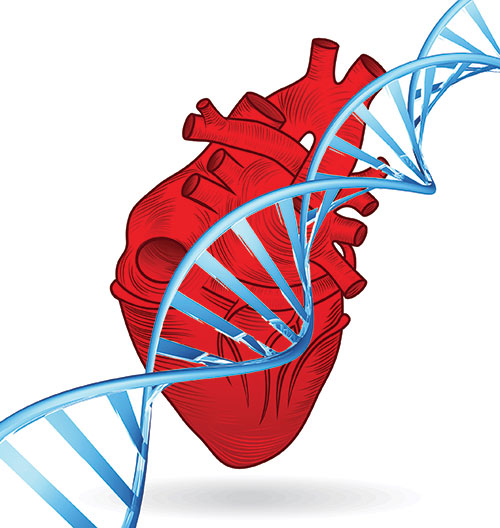
A study led by Tufts University in Boston showed that a higher combined score on eight heart-healthy behaviors was associated with slower cellular aging as measured by epigenetic biomarkers.
The research team also found that a one standard deviation (SD) increase in their score was associated with a lower risk of cardiovascular disease and death during the follow-up period.
Epigenetic age biomarkers were positively affected by a healthy lifestyle, with the most pronounced effects seen in people with genetic markers of premature aging.
“Our findings indicate that engaging in heart-healthy behaviors and managing heart disease risk factors, regardless of chronological age, is associated with younger biological age, lower risk of heart disease and stroke, and lower risk of death from heart disease and stroke, and death from all causes,” said co-lead author Jiantao Ma, assistant professor in the department of nutritional epidemiology and data science at the Friedman School of Nutrition Science and Policy at Tufts University, Boston.
Cardiovascular disease has been the leading cause of death in the United States for the past 100 years, with approximately 700,000 people dying each year from various cardiovascular diseases. Lifestyle changes can significantly reduce the chance of experiencing a life-changing cardiovascular event, such as a heart attack, but such changes can be difficult to implement and measure their impact.
To better characterize the impact of lifestyle changes, the American Heart Association created the “Life Essentials 8” (LE8) tool, which measures lifestyle factors related to heart health and creates a score for each person. Factors include diet, physical activity, nicotine exposure, sleep health, BMI, blood lipid levels, blood glucose, and blood pressure.
In this published study, Journal of the American Heart Association Marr and colleagues calculated the LE8 score for 5,682 participants in the Framingham Heart Study, and, following the assumption that increased epigenetic age correlates with accelerated biological aging, they also calculated four epigenetic age scores based on DNA methylation for the cohort (DunedinPACE score, PhenoAge, DNAmTL, and GriMAge).
Overall, a 1 SD increase in participants' LE8 scores was associated with a 35 percent reduction in risk of cardiovascular disease events over the 11- to 14-year follow-up period. Similarly, cardiovascular disease-related mortality was reduced by 36 percent and all-cause mortality was reduced by 29 percent.
Epigenetic aging scores were associated with reduced risk, especially when the GrimAge and DunedinPACE scores were used. The researchers used polygenic risk scores to assess which participants were at higher risk for increased epigenetic aging. The researchers found that a higher LE8 score had a greater positive impact in participants at higher risk for increased epigenetic aging.
“For example, among participants with higher GriMAge polygenic scores (higher than the median), the mean mediation fractions of the associations between LE8 score and incident cardiovascular disease, cardiovascular disease-specific mortality, and all-cause mortality were 39%, 39%, and 78%, respectively,” the authors wrote.
The researchers estimated that overall, epigenetic factors have a 20% influence on cardiovascular disease outcomes, with that influence increasing to 40% in people with a high genetic risk for advanced epigenetic aging.
“We know that modifiable risk factors and DNA methylation are each independently associated with cardiovascular disease. What this study adds is that DNA methylation may act as a mediator between risk factors and cardiovascular disease,” Randy Foraker, professor of medicine and director of the Center for Population Health Informatics in the Institute of Informatics, Data Science and Biostatistics at Washington University School of Medicine in St. Louis, Missouri, said in a press statement.
“This study sheds light on how cardiovascular health influences biological aging, with important implications for healthy aging and the prevention of cardiovascular disease and potentially other health conditions.”


